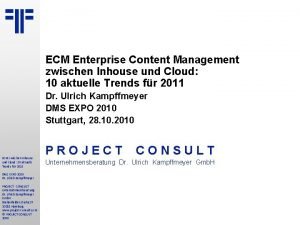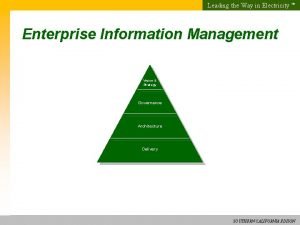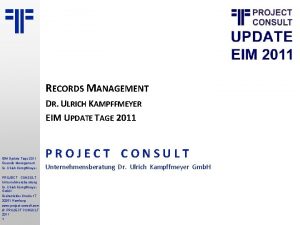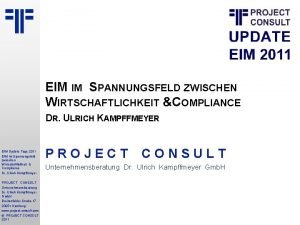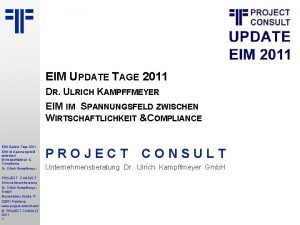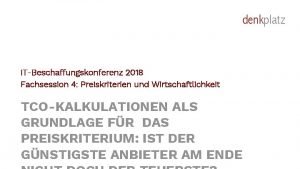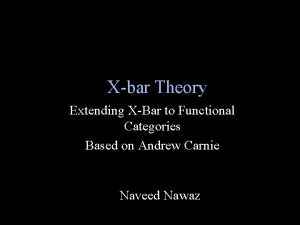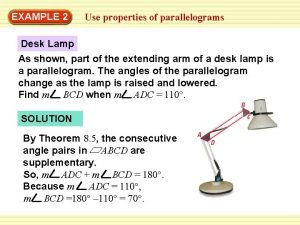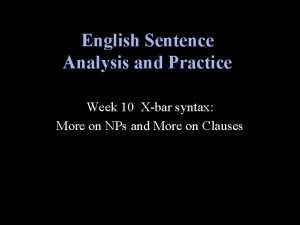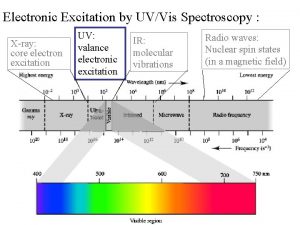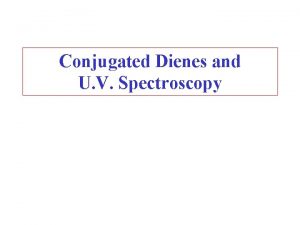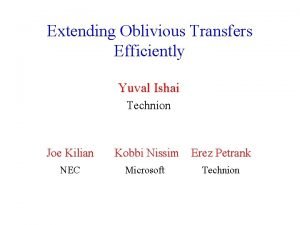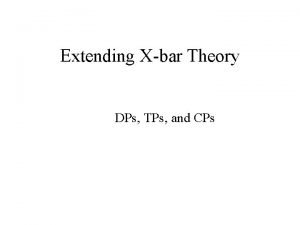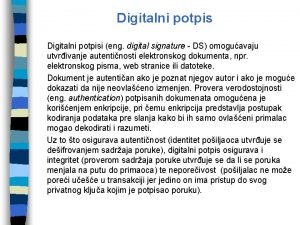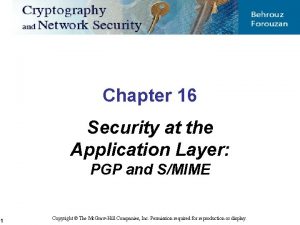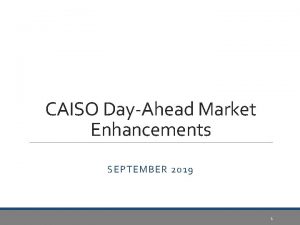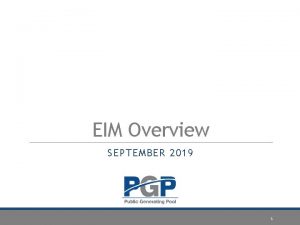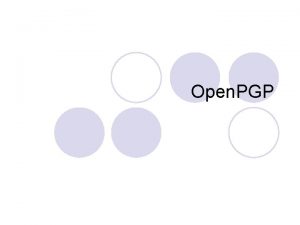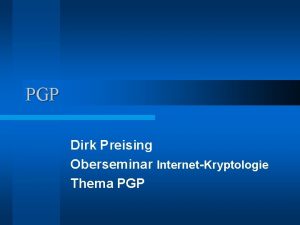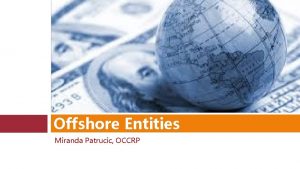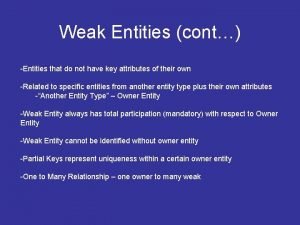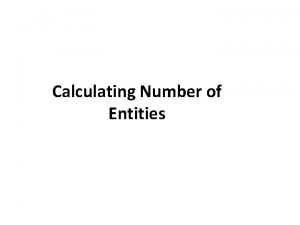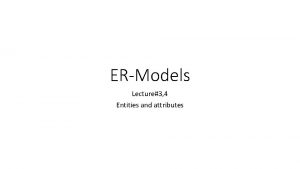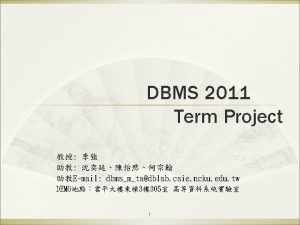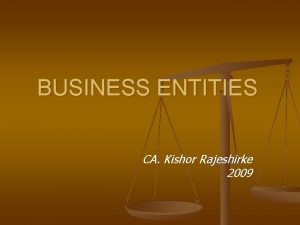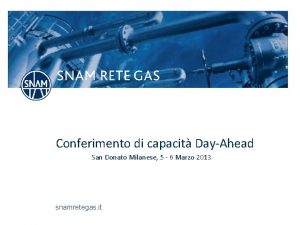Extending the DayAhead Market to EIM Entities PGP





































- Slides: 37

Extending the Day-Ahead Market to EIM Entities PGP INTERESTS OCTOBER 2019 1

Extended Day-Ahead Market Status q CAISO extending its Day-Ahead Market to EIM Entities (EDAM) is moving forward q EDAM will have an impact on all day-ahead prices and bilateral trading in the West, whether or not entities join EDAM q Market Design will be determined through a series of CAISO stakeholder processes expected to begin with an issue paper to be released October 10 th q EDAM is scheduled to go live April 2022 2

Market Design Key Issues q Resource Sufficiency q Transmission Compensation q Governance q External Resource Participation q Price Formation q GHG Accounting 3

CAISO’s Current Day-Ahead Market MARKET RUN 10: 00 am Market closes and stops accepting bids Local Market Power Mitigation Over-rides energy bids to default values if market power is determined Integrated Forward Market Optimizes: − Energy − Spin/Non-Spin − Reg Up/Down (sub 5 -min movements) RELIABILITY RUN Residual Unit Commitment 1: 00 pm Results are published Commits additional capacity outside of the market solution Note: Flexible Ramping Capability, what BPA refers to as balancing reserves, is NOT procured as part of the current day-ahead market process. Ø largely deferred to the real-time market via EIM and operator out-of-market actions 4

Resource Sufficiency EXTENDED DAY-AHEAD MARKET 5

Resource Sufficiency EIM Balancing Authority Area Purpose is to prevent entities from leaning on the market for their energy and capacity needs Imports PGP Interests ü Promotes Reliability Load = ü Ensures Equity (no leaning) ü Applied Consistently Ø Prior to hour, EIM Balancing Authority Area must demonstrate it has sufficient resources plus flexibility to address uncertainties to meet load. 6

EIM Resource Sufficiency Evaluation q. Resource Sufficiency prevents leaning by ensuring an EIM Entity can meet their requirements independently before the operating hour. q. There are 4 main tests an EIM Entity must pass § Balancing Test: base schedules must meet demand forecast § Capacity Test: INC/DEC bid range must meet BAA imbalance needs § Feasibility Test: base scheduled resources must not violate transmission constraints § Flex Ramp Sufficiency Test: resource ramp capabilities must be able to meet flex ramp requirements q A flex ramp diversity credit is given to each EIM Entity lowering the overall flex ramp requirement § Allows EIM Entities to carry less flex ramp than it would otherwise carry if meeting imbalances independently q Resource Sufficiency failure results in transfers limited to the previous hour amounts 7

EIM Resource Sufficiency Evaluation Source: BPA EIM Stakeholder meeting 8

Day-Ahead Resource Sufficiency Considerations q How will VER capacity contributions be determined for a day-ahead test? q What level of transmission firmness is required? q How will the flexible ramping requirement and diversity credit be determined? § CAISO has stated that the imbalance reserve product requirement being developed as part of the Day-Ahead Market Enhancements effort will be used for the day-ahead flex ramp sufficiency test q. What is the consequence of failure? Financial? Freeze transfers (like in EIM)? q Will there be the ability to bilaterally trade resource sufficiency requirements? q. How will the test be applied equitably? § There have been concerns raised about CAISO incorrectly passing the EIM RS test and leaning on the EIM. Need greater assurance this won’t happen in the day-ahead because of unit commitment decisions tied to day-ahead plans q. What are the impacts of not having a long-term Resource Adequacy standard in the Northwest? 9

Transmission Compensation EXTENDED DAY-AHEAD MARKET 10

Transmission Compensation Transmission Service Providers must comply with open access requirements and offer everyone the same level of transmission service at the same rate Source: BPA EIM Stakeholder meeting PGP Interests ü Open access principles are upheld ü No adverse impacts to load and existing transmission rights Ø Any discounted day-ahead transmission for EDAM could result in load customers bearing a disproportionate share of transmission costs 11

EIM Transmission Framework q. Transmission between EIM BAAs is needed to enable EIM transfers q. There are two methods of making transmission available for EIM transfers § A transmission service provider can make available unused transfer capability after t-20 min with a 0 -NX NERC Designation § An EIM Participant can donate its firm PTP transmission (7 -F NERC Designation) q. Transmission used in the EIM is at no additional charge § There is no wheeling access charge applied to EIM transfers for either method used 12

EDAM Transmission Considerations q Transmission Service Providers must comply with open access requirements and offer everyone the same level of transmission at the same rate. § Any discounted day-ahead transmission for EDAM creates inequity between EDAM and the day-ahead bilateral market. q The following options have been suggested: § Transmission service providers can make transmission available at a usage rate that applies to the entire EDAM footprint: Ø Monthly or daily transmission rate used to meet load Ø Hourly transmission rate for imbalance energy and exports for the EDAM footprint § Firm transmission for resources identified to meet resource sufficiency is made available to EDAM § Entities voluntarily make transmission available in exchange for congestion revenue rights associated with the transmission path 13

Governance EXTENDED DAY-AHEAD MARKET 14

Governance Defines fiduciary and decision -making structure for an organized market Market Rules Prices PGP Interests ü Independent Board with authority over day-ahead and real-time market rules ü Stakeholder Advisory Committee ü Independent market expert Value Treatment of Resources ü Independent Board has authority over stakeholder initiative prioritization process Ø The Board and who they consult in decision making defines the market rules that ultimately determine how value is distributed in the market 15

Current EIM Governance Structure CA Governor and CA Senate Nominating Committee Body of State Regulators ISO Board of Governors EIM Governing Body Primary: Consent Agenda Regional Issues Forum CAISO CEO *Primary Authority over All Real-Time market rules if the primary driver is the EIM. CAISO Staff Market Design Operations Real. Time Market, Transmission, and BA Operations EIM Day. Ahead 16

EIM Governance Review q CAISO is in the process of forming an EIM Governance Review Committee. § Committee will be made up of one member each from the ISO Board, EIM Governing Body, and Body of State Regulators, and 8 -10 members selected from 5 different stakeholder sectors. § Stakeholder sectors have nominated and ranked candidates. § Governance Review Committee should be seated in September. q The Governance Review Committee will recommend changes to the current EIM Governance structure and propose a governance framework for EDAM. § Review is anticipated to take 8 -12 months. § Scope will only include EDAM if a stakeholder process is initiated. 17

EDAM Governance Structure Primary Authority Option Body of State Regulators Regional Issues Forum with ability to give input on stakeholder processes and priority issues? CA Governor and CA Senate Nominating Committee Formal role for public power? ISO Board of Governors EIM Governing Body Primary: Consent Agenda CAISO CEO *Primary Authority over All Real-Time and Day-Ahead Market Issues? CAISO Staff Market Design Operations Real. Time Market, Transmission, and BA Operations EIM Day. Ahead 18

External Resource Participation EXTENDED DAY-AHEAD MARKET 19

EIM External Resource Participation q Resources in a non-EIM BAA can only participate in the EIM if pseudo-tied into an EIM Entity BAA q. To pseudo-tie a resource into a BAA means to electrically connect that resource to the BA. § It is incorporated into the AGC system. PR GRANT Psu ed WA ie RR CHELAN Psuedo-tie MIDC RI -tie do sue § The BA has control of the resource. q. For example, a portion of the Mid. C is pseudo-tied into PSE and PAC and used as an EIM Participating Resource o-t DOUGLAS PSE (EIM Entity) P WE 20

EIM External Resource Participation q. There were several issues with external resource participation in the EIM: § How does an external resource demonstrate it is not leaning on the EIM? § How is market power mitigation applied? § How is the transmission reciprocity principle applied? § What is the cost to participate? § How can CAISO ensure performance and what is the consequence of nonperformance? § If the host BA is ensuring delivery, how can CAISO know what resource is being dispatched to ensure proper modeling for congestion management and settlements? 21

EDAM External Resource Participation Considerations CAISO R 10 Dispatch Operating Targets MW R 20 MW Non-EDAM Entity BAA R 30 MW R 40 EDAM Entity 1 EIM Transfers Gen/Load Aggregation Point EDAM Entity 2 Gen/Load Aggregation Point MW External Resources Will external resources be permitted to participate in EDAM by submitting bids at EDAM Entity interties. And if so, what will the requirements be? 22

Price Formation EXTENDED DAY-AHEAD MARKET 23

Price Formation PGP Interests ü Appropriate compensation for all attributes provided ü Proper price signals that accurately indicate shortages and scarcity 24

EDAM Price Formation Considerations q The day-ahead bilateral market trades primarily WSPP Schedule C Energy and sets trading hub prices based on firm energy q The current CAISO day-ahead market does not differentiate between firm supply, virtual supply and any products in-between § Firm supply receives “energy-only” price q CAISO procures back-up supply through out-of-market actions and compensates them via side payments § Not all market activity needed to ensure “firm energy” is included in the market clearing price § Results in a lower clearing price paid to all generators q How price formation is determined in EDAM is expected to have a significant impact on day-ahead prices and potentially futures contracts regardless of whether an entity participates § May replace a material portion of day-ahead bilateral transactions § Could significantly undervalue firm energy supply 25

Day-Ahead Market Price Formation Overview Non. Firm Unit Contingent Non-firm Energy Firm Energy Capacity Firm Energy Not included in bilateral market price index Capacity Unit Contingent Speculative Intertie Supply Internal VER output Virtual Supply Backup Capacity Bilateral Markets Price Index (at major trading hubs) CAISO Market Price Index (market clearing price) Procured outside the market and paid via side payments 26

Day-Ahead Market Settlement Example MARKET RUN 10: 00 am Market closes and stops accepting bids Local Market Power Mitigation RELIABILITY RUN Integrated Forward Market Residual Unit Commitment Results are published 40 GW (bid-in demand ) Market Clearing Price: $40 $8 EXAMPLE: 1: 00 pm Energy Supply Capacity Procured or exceptionally dispatched outside the market and paid via side payments Assumes current sequential dayahead market process Note: If Capacity was co-optimized with energy in a single market run, the clearing price would be $48 paid to all generators 27

Day-Ahead Market Enhancements (DAME) 1. Introduces a new day-ahead imbalance reserves product to address ramping needs and uncertainty between day-ahead and real-time. § Requirement will be used to set day-ahead resource sufficiency flexible capacity requirements 2. Option to integrate the day-ahead market and reliability runs to increase efficiency and co-optimize capacity with other day-ahead products. § Differentiates physical and virtual supply § Incorporates compensation for backup capacity into the market clearing price resulting in higher payments for firm energy deliveries 28

Day-Ahead Market Enhancements CAISO Bilateral Non. Firm Unit Contingent Non-firm Energy Firm Energy Capacity Not included in bilateral market price index Virtual Supply Internal VER output Unit Contingent Firm Energy Capacity NEW PRODUCT Bilateral Markets Price Index (at major trading hubs) Imbalance Reserves OPTION: NEW CAPACITY PAYMENT CAISO Market Price Index (market clearing price) Capacity 29

Day-Ahead Flexible Capacity Product Settlement - Integrated MARKET RUN 10: 00 am Market closes and stops accepting bids Local Market Power Mitigation Integrated Forward Market RELIABILITY RUN Residual Unit Commitment 1: 00 pm Results are published P 97. 5 demand forecast (45 GW) EXAMPLE: $5 Market Clearing Price: $48 $40 Energy + $8 Backup Capacity Imbalance Reserves Up Energy + Capacity P 50 demand forecast (40 GW) Introduces Product Differentiation Ø Price paid to Virtual Supply: $40 Ø Price paid to Physical Supply: $48 30

Day-Ahead Market Enhancements Next Steps q The details of the proposal matter § Sequential vs. integrated day-ahead market runs § Further differentiation between firm and non-firm physical supply § Where should the market clear? (P 50 vs. P 97. 5) q BPA has publicly stated the day-ahead flexible capacity product is important to be implemented before they go live in the EIM (est. March 2022). § Initiative is scheduled for Governing Body approvals in Q 4 2020 § Implementation scheduled for fall 2021 31

GHG Accounting EXTENDED DAY-AHEAD MARKET 32

Greenhouse Gas Accounting In organized markets, there is EIM BAA 1 no explicit link EIM BAA 2 Load PGP Interests ü Incents zero carbon resources Load between individual resources and loads California Load What should be assumed? ü Appropriate compensation for Unintended GHG attributes consequences? ü Compatible with multiple jurisdictions Ø To comply with state carbon legislation, the market operator needs a way to identify which resources are serving which load 33

2018 EIM GHG Enhancements q q EIM BAA CARB was very concerned about the increased emissions outside of California created by the EIM GHG design. 150 MW Max 100 MW Base Schedule In 2018, CAISO put a partial fix in place. § The amount of “secondary leakage” was reduced, but not eliminated. Base Schedule 50 MW § Limits the quantity a resource can be “deemed” to be imported into California to the MW value bid above 50 MW its base schedule. “deemed” § The market will “deem” a resource’s base schedule to serve CA load if the resource’s upward dispatch range is not fully dispatched. 50 MW “Headroom” delivered 0 MW Transfer California 34

EIM Deeming Algorithm EIM BAA 1 EIM BAA 2 50 MW “implied” unspecified import + 50 MW 150 MW Max 0 MW Export e-Tag Base Schedule 50 MW W ag 0 M t e-T or 50 MW “deemed” delivered GHG Shadow p Ex Energy Bid: $35 GHG Bid Adder: $0 Total: $35 Energy Bid: $32 GHG Bid Adder: $12 Total: $44 Price = $6 California Load + 150 MW Ex 50 M po rt e W -Ta g 100 MW Base Schedule 50 MW “Headroom” 50 MW Actual Dispatch +100 MW Energy Bid: $28 GHG Bid Adder: $6 Total: $34 35

EIM Deeming Algorithm Outcomes 1. Results in the wrong dispatch and incorrect GHG accounting § Higher emitting resources are able to make new sales into California and are dispatched instead of clean resources § California thermal resources are displaced by higher cost/higher emitting external thermal resources 2. “Deemed” deliveries mask emissions deliveries § Incremental emissions incurred outside of California (“secondary leakage”) are not addressed by CARB’s program 3. The GHG shadow price is artificially suppressed § True costs of external resources being imported into California are not captured § The more clean resources that participate in the EIM, the higher the likelihood that a zero/low GHG cost resource is the marginal GHG resource. 4. Base schedule “deemed” to serve California is assumed to be backfilled by EIM imports § EIM imports are considered “unspecified” from a carbon content perspective (0. 428 metric ton CO 2 e per MWh) § May impact an entity’s overall ACS emissions factor 36

EDAM GHG Accounting Considerations q CARB is still concerned about the increased emissions occurring outside of California because of the current EIM GHG accounting method q And CAISO has stated that the current approach will not work for EDAM § One of the reasons is that there are no base schedules in EDAM q EDAM GHG accounting will be addressed in the stakeholder process 37
 Business entities that operate in a duel market structure
Business entities that operate in a duel market structure 10 entitas produk dalam pemasaran
10 entitas produk dalam pemasaran Leader challenger
Leader challenger Market segmentation objectives
Market segmentation objectives Cloud based enterprise content management
Cloud based enterprise content management Unabhängige eim beratung
Unabhängige eim beratung Unabhängige eim consulting
Unabhängige eim consulting The way
The way Ulrich kampffmeyer
Ulrich kampffmeyer Vorgehensmodell eim
Vorgehensmodell eim Rapid marts bw
Rapid marts bw Risikomanagement eim
Risikomanagement eim Vorgehensmodell eim
Vorgehensmodell eim Digital services for information management
Digital services for information management Marktanalyse eim
Marktanalyse eim Extending x-bar theory to functional categories
Extending x-bar theory to functional categories Very large land mass
Very large land mass Codominant biology definition
Codominant biology definition Section 1 chromosomes and phenotype study guide a
Section 1 chromosomes and phenotype study guide a Emerging proficient extending
Emerging proficient extending Gmod lighting
Gmod lighting X bar theory
X bar theory Uv xray
Uv xray A high point of land extending into water
A high point of land extending into water Chapter 12 extending surface area and volume
Chapter 12 extending surface area and volume Punnett square color blindness
Punnett square color blindness Grassland landforms
Grassland landforms Double bond extending conjugation
Double bond extending conjugation Problem 8-3 extending amounts across the work sheet
Problem 8-3 extending amounts across the work sheet Extending oblivious transfers efficiently
Extending oblivious transfers efficiently Dps tps
Dps tps Chapter 7 extending mendelian genetics vocabulary practice
Chapter 7 extending mendelian genetics vocabulary practice Karyotype
Karyotype Pgp signature
Pgp signature Tess components
Tess components Hushmail pgp
Hushmail pgp Explain pgp scenarios for application layer security
Explain pgp scenarios for application layer security Pgp ccsd
Pgp ccsd




